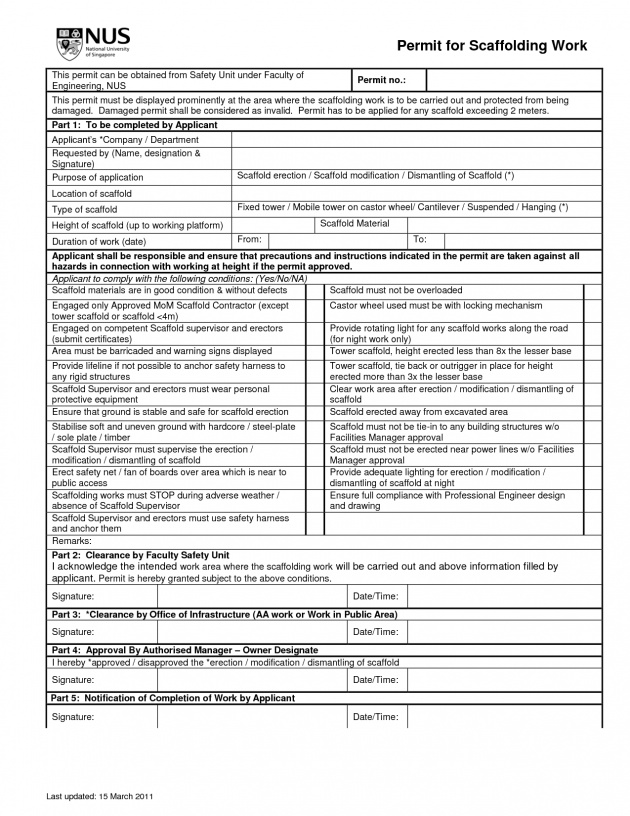

The standard prohibits using repaired wire. Also see, OSHA Standards and Interpretation Letter: - Scaffolds: Lifelines, support lines, and suspension ropes cannot have a common anchor point. The suspension ropes must be long enough to allow the scaffold to be lowered to the level below without the rope passing through the hoist, or the end of the rope configured to prevent the end from passing through the hoist.

A competent person must inspect ropes for defects prior to each workshift and after every occurrence that could affect a rope's integrity.Guardrails, a personal fall-arrest system, or both must protect each employee more than 10 feet (3.1 m) above a lower level from falling.

All suspension scaffolds must be tied or otherwise secured to prevent them from swaying, as determined by a competent person.A competent person must evaluate all direct connections prior to use to confirm that the supporting surfaces are able to support the imposed load.All support devices must rest on surfaces capable of supporting at least four times the load imposed on them by the scaffold when operating at the rated load of the hoist, or at least one-and-a-half times the load imposed on them by the scaffold at the stall capacity of the hoist, whichever is greater.Employers must ensure that all employees are trained to recognize the hazards associated with the type of scaffold being used.Some of the requirements for all types of suspension scaffolds include:


 0 kommentar(er)
0 kommentar(er)
